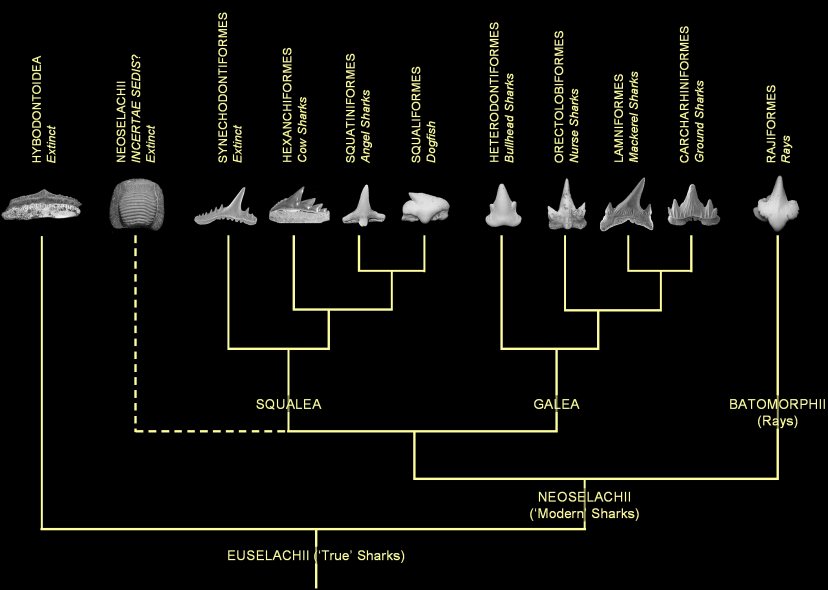
PHYLOGENY OF THE CHALK ELASMOBRANCHS
[Family Tree of the Chalk Sharks & Rays]

Figure 1. Phylogenetic model (family tree) for all Elasmobranch orders so far confirmed from the British Chalk. The model is after the study of Underwood, 2006, which demonstrated that the fossil record gave support to phylogenies derived from molecular studies (e.g. Douady et al., 2003; Winchell et al., 2004; Maisey et al., 2004). These infer that the Batoids (rays) are an early branch of the Neoselachians, in contrast to traditional models based on tooth-morphology which place the Batoids as a late branch of the Squalea (e.g. Shirai, 1996; Carvalho, 1996).
Figure 2. Highly tentative phylogenetic model for the Lamniform families confirmed from the British Chalk. Morphological characters such as root form, combined with stratigraphic first-occurrence data, suggest that the Eoptolamnids were the earliest Lamniforms (Barremian) followed by the Anacoracids (Albian) (Kriwet et al., 2008; C. Underwood pers. com., 2009). The ‘higher’ Lamniforms can be ordered based on molecular studies (e.g. Naylor et al., 1997) and morphological models (e.g. Shirai, 1996; Shimada, 2005). Shimada (2005) concluded that there is an evolutionary trend towards broader cusps ('blades') (i.e. the possession of narrow cusps such as those of the Eoptolamnids and Mitsukurinids is the pleisomorphic ('primitive') state).